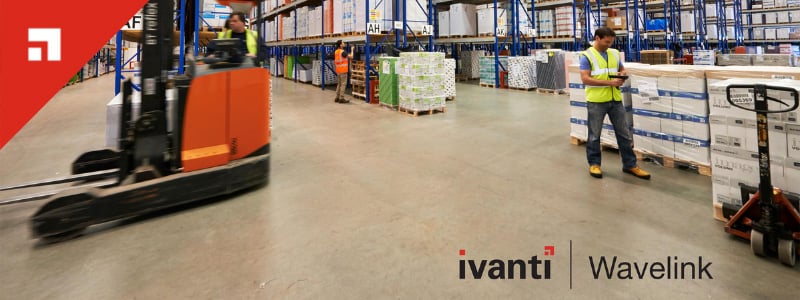What does the future hold for supply chain processes?
Global supply chains have been under immense pressure over the past year, fighting to keep up with unprecedented demand for online goods and critical healthcare supplies while battling stock shortages around the world. However, businesses on the whole came out swinging, managing to scale quickly and competently adapt to the restrictive working procedures necessary to fulfil orders and keep customers happy.
In order to cope with the unpredictability of the coming months and years, supply chain businesses need to look at the future of solutions in order to remain competitive. The pandemic taught businesses that they were more agile than they thought and able to cope quickly with unexpected changes. However, agility remains the key to managing an unpredictable future, with questions remaining about how demand, including for consumer eCommerce, will fluctuate going forwards.
Modern mobile devices enhance supply chain productivity
For supply chain and warehousing businesses, workers’ productivity will be crucial to keep up with market demand and growth going forwards. Organizations are being given more choices when it comes to mobile operating systems (OS) optimized for both supply chain processes and the user experience, which is becoming a non-negotiable factor. This is visible as traditional Windows and Android OS’ are now beginning to share the stage with Apple’s iOS. iOS adoption is growing in some sectors, in particular retail and pharma, which see the security, manageability and consumer-grade user interface as a benefit despite the often high cost of adoption. What’s more, the Windows CE end of support date in April will encourage further migration and modernization to new devices. Nevertheless, Windows will still be present in the supply chain market for some time.
Businesses therefore need the option of compatible software for all three, such as Ivanti Velocity, which quickly and securely migrates existing telnet and web apps to Android, iOS, and Windows 10. With Velocity, Ivanti Wavelink gives businesses the option to choose which devices they wish to run within their supply chains, offering the same view and a consistent user experience on each device to maximize worker productivity and reduce training times.
The rise of Industrial IoT
The supply chain is also experiencing the revived growth of the Industrial Internet of Things (IIoT). This shift was already underway pre-pandemic but COVID-19 has accelerated it as supply chain businesses have been unable to operate in traditional ways. IIoT devices are hugely beneficial within the supply chain, as the connectivity they provide can enable real-time inventory visibility and asset tracking as goods move down the chain, predictive maintenance of machinery and equipment to avoid unplanned downtime, and early identification of issues caused by goods getting lost or delayed. What’s more, an IIoT network can facilitate the introduction of automated cobots and reduce training times for employees by encouraging better integration between the user and the connected devices in the warehouse. However, this may be a double-edged sword as, while the IIoT can increase efficiencies and enable supply chain employees to work more efficiently, it also means more devices need to be managed and controlled to make sure that nothing goes wrong.
Supply chain companies must therefore take steps to mitigate IIoT issues, including ensuring all edge devices are properly managed and cared for. With this, companies are also starting to transform their mindset to UEM being the new MDM. Mobile Device Management (MDM) capabilities combined from Ivanti Avalanche and MobileIron are critical for maintaining control of connected supply chain devices and assets, and keeping them secure, available and accessible. The combined solutions optimize device performance by allowing businesses to configure, deploy, update and maintain all devices in one simple system. What’s more, it can enable a hands-off approach to device management that removes the need for manual interaction by remotely managing all connected devices, which is crucial as the impacts of the pandemic remain.
If the past year has taught us anything, it’s that nobody can predict what’s just around the corner. However, supply chain companies can secure their place in tomorrow’s world by taking steps to improve their productivity and agility, which will impact their top and bottom line. Whether that’s achieved with upgrades to mobile device software, the integration of complementary devices into the IIoT or reducing downtime with automated device management, it’s vital that businesses leverage supportive technologies that give them the power to optimize these decisions.
Find out more about Ivanti Wavelink solutions here.

